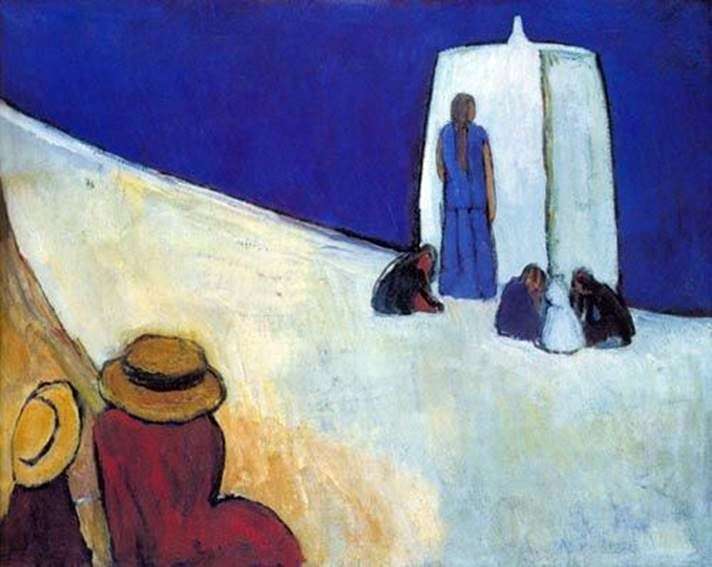
Vanessa Bell wrote five paintings “based on” this beach, which she often visited in 1909-1911. But over the “Beach in Stadland” she worked in her London studio, using only a small sketch made in the open air. Perhaps this way of working was necessary for the artist to distract from unnecessary details and concentrate on the maximum simplification of forms. The space of the picture is absolutely flat.
The viewer can not even be sure that the blue wedge occupying the upper half of the canvas is the sea, not the wall. About this he guessed only from the title. The palette is limited here by several tones, each of which is enclosed in clearly delineated boundaries of one form or another. All the artist’s composition is divided by several diagonals, the main of which is the line of collision of the sea and the beach. The second diagonal “cuts off” the left corner of the picture, and the third, imaginary, connects the characters of the first plan with the characters of the second. This simple and balanced composition, as well as a pacifying combination of blue and dirty white, levels off the anxiety that the viewer might have when looking at abstract figures at the very edge of the water.
 Playa de Stadland – Vanessa Bell
Playa de Stadland – Vanessa Bell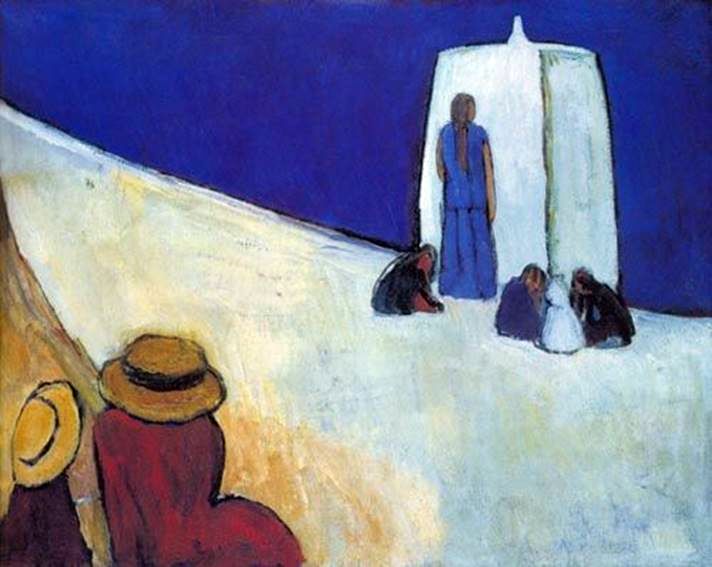 Plage de Stadland – Vanessa Bell
Plage de Stadland – Vanessa Bell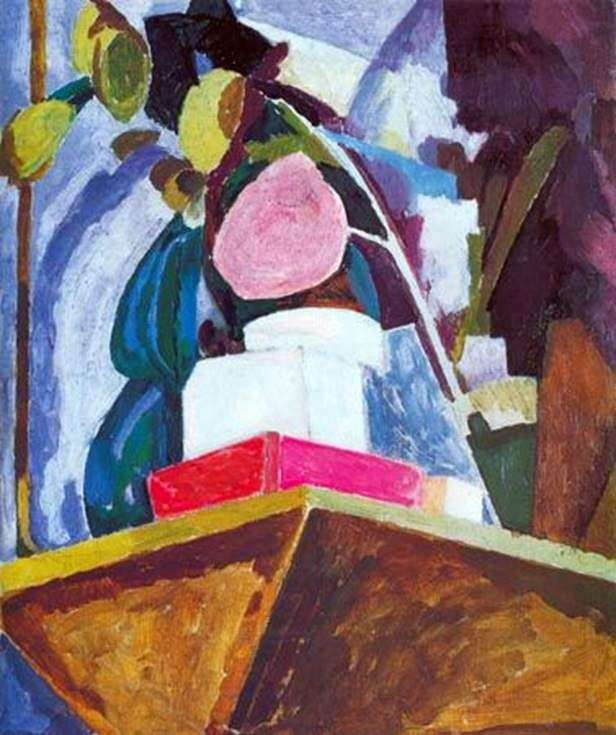 Still life on the corner of the mantelpiece by Vanessa Bell
Still life on the corner of the mantelpiece by Vanessa Bell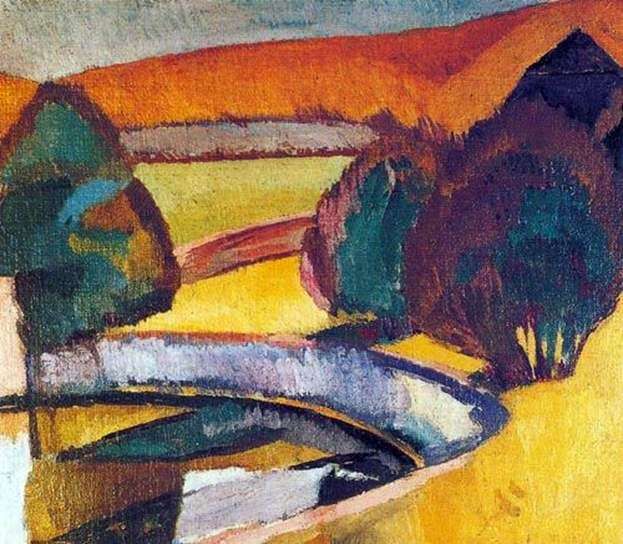 Pond in Charleston by Vanessa Bell
Pond in Charleston by Vanessa Bell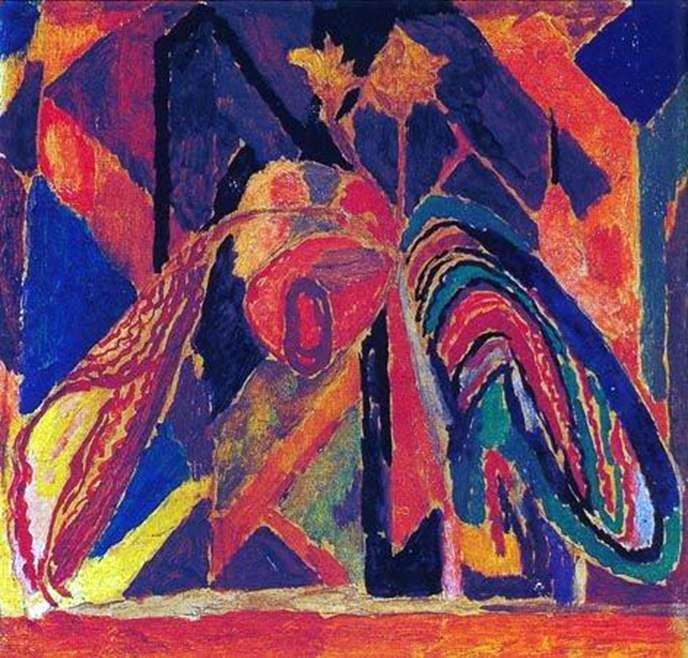 Paper flowers in a bottle by Vanessa Bell
Paper flowers in a bottle by Vanessa Bell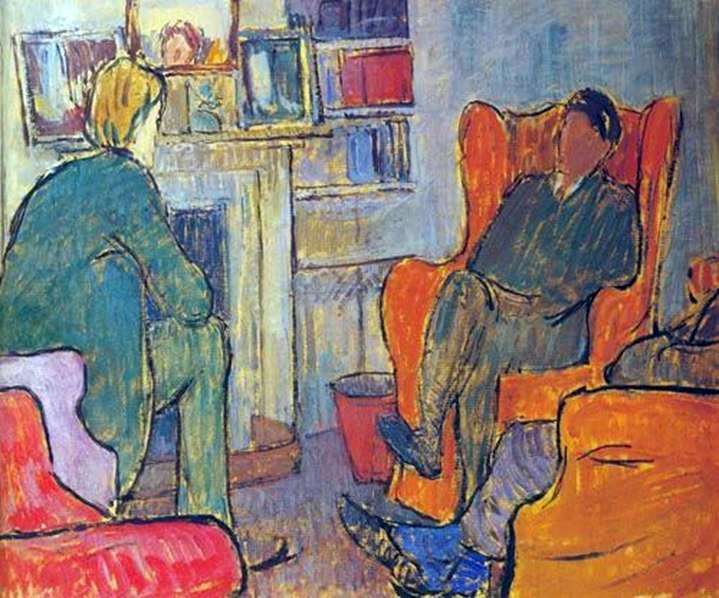 Conversation in Ash House by Vanessa Bell
Conversation in Ash House by Vanessa Bell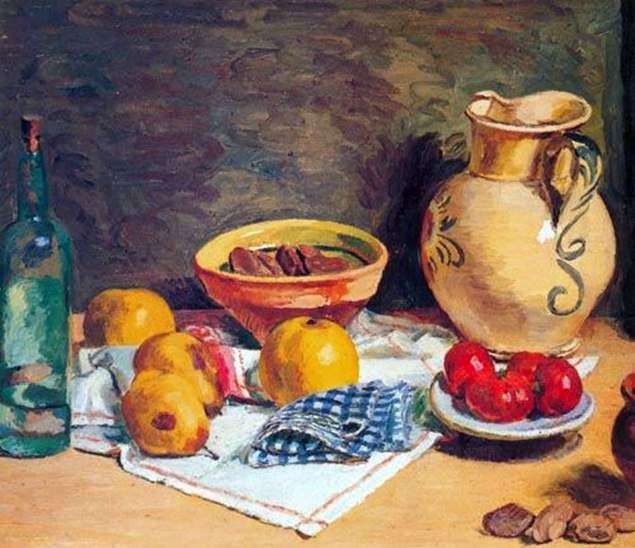 Still Life with a Jug by Vanessa Bell
Still Life with a Jug by Vanessa Bell Portrait of David Garnet by Vanessa Bell
Portrait of David Garnet by Vanessa Bell